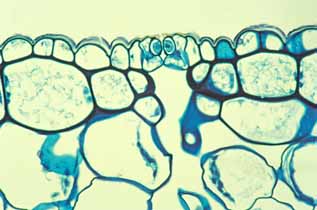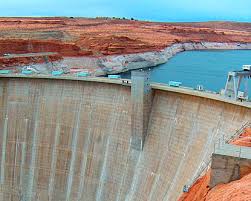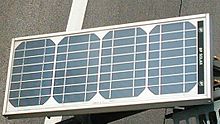|
Welcome
Hi, welcome to my science blog! Remember to visit other blogs and post a message in the FLASHbox below.
Please don't spam or post any vulgaraties.
If you want to see my previous posts, there is an archive box above that is sorted accordingly to month or post title name.
Post a message
Thank You!
|
How do desert plants adapt to the conditions in the desert
Monday, August 23, 2010
Biology (Updated, edited 25 Aug) Cacti are prickly plants, characterisitic of the hot, dry regions of the world. They originated from desert regions with low rainfall and nature has provided them with special cells which accumulate large quantities of water. This enables them to survive the long months of drought. Cactus roots are covered with a cork-like coating to protect them from the heat, they creep under the sand as far as possible in all directions. This means they can absorb what little moisture is present. A cactus' roots can grow as tall as 6 to 7 metres! Bigger than the plant itself! The leaves (spikes, thorns) of the cactus have a very small surface area to prevent loss of any moisture throught transpiration under the hot, burning Sun. These plants have a thick waxy coating to seal in the moisture. Cacti have developed spines which allow less water to evaporate through transpiration by shading the plant, and defend the cactus against water-seeking animals. The enlarged stems carry out photosynthesis and stores the water instead of the leaves. The stem's epidermis has stomata.  This is so that the stems of the cactus will be able to absorb carbon dioxide from it's surroundings and photosynthesize. Many desert plants, unlike normal plants, open up their stomates only at night to take in the carbon dioxide and keep it till the next day for use. Desert plants have developed 3 main adaptive strategies: Succulent A succulent must be able to absorb large quantities of water in short periods. Succulents have extensive, shallow root systems. Drought tolerance To withstand desiccation without dying. Plants in this category often shed leaves during the dry periods and enter a deep dormancy. Most water loss is from transpiration through leaf surfaces. Hence, dropping leaves conserves water in the stems. Drought avoidance Most cacti have a short growing season and long dormancy. Plants which are able to survive in dry conditions are called xerophytic. An example of an adapted species of cactus is the Desert Ironwood.  They are the tallest tree in the Sonoran Desert, growing up to 15-25 feet. They will usually shed their leaves to reduce transpiration. It provides a safe place for seed germination, and protects seedlings from extreme cold. It also protects saplings from the damaging effects of the sun. It has all of the adaptations of a desert plant. Differences in cellular structure and function, as well as in the basic process of creating carbohydrates from water and carbon dioxide also help it to survive in arid conditions. Another plant called stone plants exposes only a few of its leaves. Indeed, Desert plants are amazing, especially in how they are adapted to such environments.
Energy
Friday, May 14, 2010
What is energy? Energy is defined as the ability to do work.Well, there are Potential Energy -Chemical potential energy -Gravitational potential energy -Elastic potential energy Kinetic Energy Heat Energy Light Energy Sound Energy Electrical Energy Our main source of energy is from the Sun. In Singapore, we get our electricity from burning Natural Gas. This is done at Senoko Power Station, which generates and supplies electricity. However, in other countries, they can generate electricity from using Wind Turbines, Solar Panels and Dams to collect energy and convert it into electricity.  Hoover Dam Hoover DamA dam is a barrier that impounds water or underground streams. Rushing water will flow past the dam, which will cause a turbine to spin. The spinning of the turbine will cause the generator to produce electricity. The water will then flow back and will be used again. Kinetic Energy (from the rushing water) -> Electrical Energy  A wind turbine is a rotary device that extracts energy from the wind. The wind will cause the turbines to move and the generator will produce electricity. Kinetic Energy (from the wind) -> Electrical Energy  East Coast Park Jetty (Singapore) East Coast Park Jetty (Singapore)If you are going to East Coast Park, I have noticed that there are actually a few small wind turbines are at the end of the jetty. As the wind at East Coast Park (especially the jetty area) is very strong, the wind turbines are fully in use. The energy collected will be used to light up the lights at the jetty at night.  Solar Panels Solar panels are used in houses ect. They trap light from the sun and converts it into electrical energy. Light Energy (from the Sun) -> Electrical Energy Credits: Stiletto Heels
Tuesday, April 20, 2010
   Girls just love to wear stilettos. They make girls look tall and beautiful. It is a 'must have' for all girls. But are there disadvantages? Disadvantages Stilettos transmits a large amount of force in a small area. The pressure transmitted can cause damage to carpets and floors. All types of high heel shoes will counter the natural functionality of the foot. It will cause skeletal or muscular complications when worn excessively. Stilettos are no exception. Wearing them too much will essentially remove the protective springiness/cushioning of the arch, which will create different kinds of painful problems. Continuous usage will also shorten the calf muscle. It is said that such posture changes the pelvis and spine stability, which results into painful problems. As a stiletto is shaped in a triangular way, it can also alter a foot's shape. It is also said that continuously wearing stilettos might affect a woman's internal organs and fertility. The forward tilting of the pelvis allows the abdominal contents to spill forward. In doing so, woman compress their internal organs in a condition known as visceroptosis. As heels get steeper, your pelvis is asked to tilt forwards. This can slow down the gastric function, leading to menstrual dysfunction and can ultimately impair fertility. Overall, the posture forced on women in high heels, especially stilettos, is bound to cause muscular aches, foot problems, and in many, back pain. In conclusion, try not to wear stilettos excessively as it will cause health problems. Credits: Cartesian Diver
Monday, April 12, 2010
    A cartesian diver is a science experiment to demonstrate the principle of buoyancy (and also the ideal gas law). The cartesian diver experiment is set up by placing a 'diver' (a small rigid tube open at one end) in a larger container with some flexible component (2 litre soft drink bottle). The large container is filled with water and must be airtight when closed. The 'diver' is partially filled with a small amount of water, but contains enough air so that it is nearly neutrally buoyant. So that it will be buoyant enough to float to the top while being completely submerged. The 'diving' occurs when the flexible part of the large container is pressed inwards, causing the 'diver' to sink until the pressure is released. Explanation: When the pressure increases by squeezing the container, the least dense material, which is the air in the diver, is affected. The pressure on the water increases the pressure on the air bubble in the 'diver'. The air compresses and reduces in volume, permitting more water to enter the 'diver'. The 'diver' now displaces a lesser weight of water than its own weight and sinks. When the pressure on the container is released, the air expands again increasing the weight of water displaced and the 'diver' becomes buoyant again and floats. Credits: How to find the density of a cork
Sunday, April 4, 2010
 As a cork will float on water, it will make it difficult to find the density using the displacement can. You can place a piece of metal and tie it with the cork. Submerge it into the displacement can filled with water. Find the volume of water displaced. Next, just submerge the piece of metal and find the volume of water displaced. Then weigh the piece of cork to find its mass. Volume of cork and metal - Volume of metal = Volume of cork Mass of cork/Volume of cork = Density of cork Credits: Why does Oranges float on water?
Friday, April 2, 2010
  Why does Oranges float on water?  It is because, the orange's rind (picture above), contains many air spaces that will allow the orange to float. The orange's rind is porous. Making the orange not as dense as water, allowing the orange to float. When the orange is peeled, the orange rind is gone and it will sink. The same is for the lemon. Credits: Density
The density of a substance is the mass per unit volume of a substance.  Density = Mass/Volume The SI Unit for density is kilograms per cubic metre. (kg/m³) A denser substance will sink and a less dense substance will float. One example is oil and water. As water is denser than oil, the oil will float on water. Dead Sea The Dead Sea is one of the world's saltiest bodies of water, containing 33.7% salinity. The Dead Sea has a lot of salt content that no animal can flourish in it. (Hence the name The Dead Sea) You will be able to see lots of white salt crystals around the shores of the Dead Sea. The salts in the Dead Sea is not the ordinary salt, but mineral salts. Why we are able to float in the Dead Sea is because of the extremely high concentration of dissolved mineral salts in the water that its density is way more than that of plain water. Credits: |
 Fellow bloggers!
Heather Lim
Samantha Samuel
Soh Jing Wen
Empty
Empty
Empty
Empty
Empty
Empty
Empty
Empty
Empty
Empty
Empty
Do remember to visit again! |